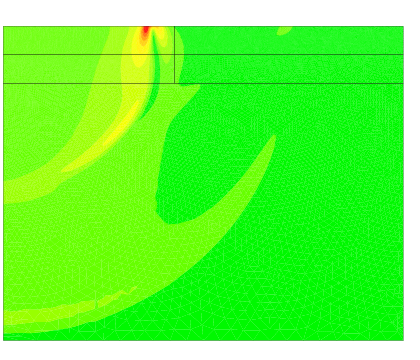Propagation and diffusion in very heterogeneous media
Non-destructive evaluation requires the development of digital or analytical tools that describe the phenomena of wave propagation or static field diffusion in man-made structures and civil engineering infrastructure.
The research focuses on near fields and far fields, 2D and 3D propagation, multi-diffusions, and nonlinearities.
The laboratory is heavily invested in the study of heterogeneity in materials such as hydraulic concrete and bituminous materials, natural or altered soils - the granularity of these materials can be of the same order of magnitude as the wavelengths used. This physical characterization (mechanical, electrical, or electromagnetic) is related to the physico-chemical and mechanical properties of these materials, which reflect their durability or degradation state (such as porosity, density, compactness, static Young's modulus, water content, chlorides, or sulfates).
The research in this area focuses on:
- Inverting the dispersion curves of ultrasonic and electromagnetic surface waves in matrix/inclusion media with gradient properties (water content, chloride content, porosity, carbonation depth, damage to concrete coatings).
- Coupling electrical, electromagnetic, and mechanical methods for evaluating the water content of materials, overcoming environmental biases and coupling state parameters in non-destructive observables.
- Automating measurements (sensor-carrying robots, scanners) and developing embedded sensors (concrete) for electrical, capacitive, radar, and ultrasonic methods.
- Coupling ultrasonic diffuse field (coda) and nonlinear acoustics (slow dynamics and fast dynamics) for crack localization through differential imaging between different levels of ultrasonic excitation (following the self-healing of cracks).
